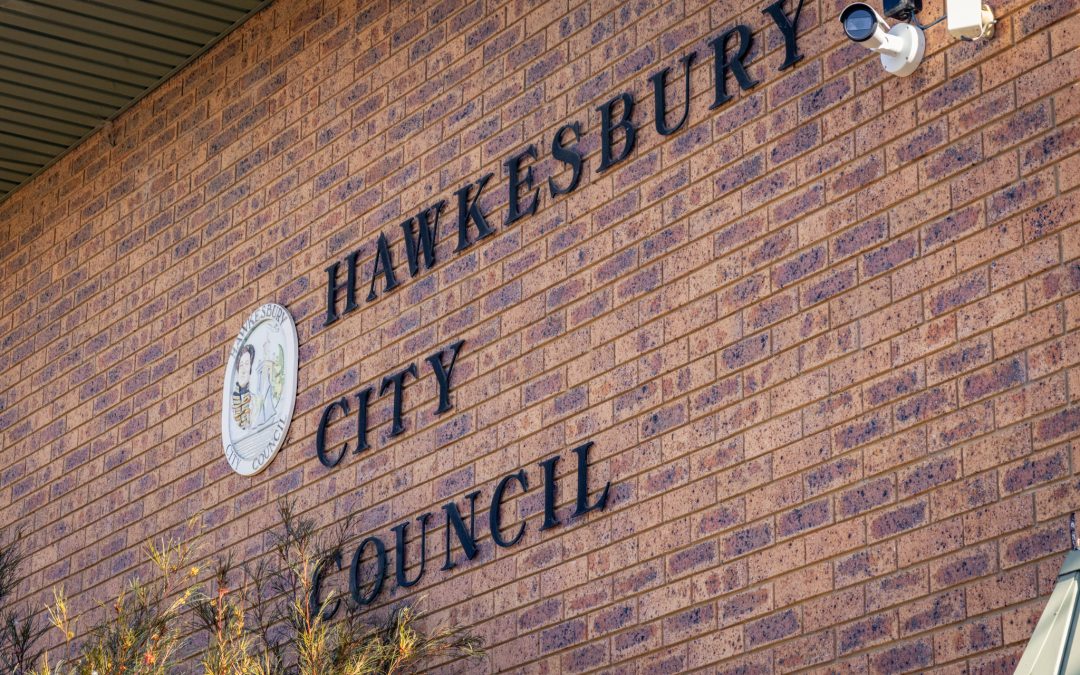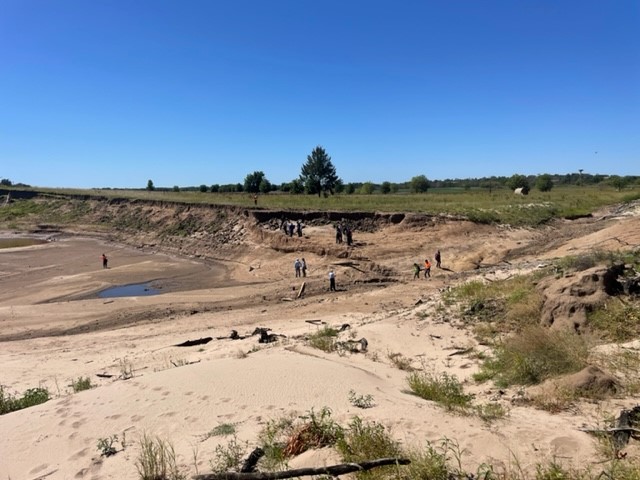Hawkesbury Post contacted all...


Hawkesbury Post contacted all...

In a heartwarming recognition of community...

After more than two decades of dedicated service, the...
Michael Sainsbury
Despite the ongoing spread of toxic PFAS chemicals across Richmond and Windsor, including elevated levels found on the riverbank at the Cornwallis Road and at Western Sydney University, the Hawkesbury City Council will not continue any testing. This includes undertaking no testing of recycled water that it produces from its sewerage plant.
The poisonous chemicals, Per-and Polyfluoroalkyl Substances (PFAS), were originally released from the firefighting foam used for decades on Richmond RAAF base, spreading across the vast flood plain adjacent to the site. Maps, obtained by the Hawkesbury Post, and used in a class action lawsuit that was settled for $132.7 million, show the toxic chemicals have already spread to parts of Windsor.
The Council has made it clear that it does not see itself as responsible in any way for the monitoring of PFAS despite growing evidence from the US and Europe that the chemicals are more pervasive and toxic than Australian authorities are prepared to admit.
“Council is not the authority charged with responsibility for the protection of the environment – that is the NSW EPA. The responsibility for broader detection and response to PFAS is not Council’s responsibility. That sits with the NSW and/or Australian Governments,” HCC Infrastructure Director Will Barton said.
The NSW Environmental Protection Agency had admitted it has had discussions and given warnings about PFAS levels to households and landowners in the vicinity of the RAAF base – but it won’t be specific and say to whom or how widespread its warnings have been.
Federal Member for Macquarie Susan Templeman has been closely engaged with the growing PFAS disaster and has promised a briefing with officials from Canberra to update locals next month.
A lack of testing since 2019 by the NSW Environmental Protection Agency, the Department of Defence and HCC, means that Hawkesbury residents are in the dark about their exposure to PFAS, so-called “forever” chemicals. These chemicals do not deteriorate in nature, have been shown to cause fatal illness in animals and are increasingly linked to human illnesses including a range of cancers. It can also contaminate food sources including eggs, vegetables and livestock.
Australian authorities are generally seen by scientists as lagging in their response to the problems caused by PFAS – and the levels at which PFAS should be considered dangerous – in comparison with the USA and the European Union. For instance, a drop of PFAS in an Olympic sized swimming pool is toxic.
A study released in the U.S. last week said the “forever chemicals” have been found in 45% of U.S. tap water following testing in all 50 states. The study by the US Geological Survey (USGS) is one of the largest of its kind undertaken.
The finding follows a landmark settlement announced in June by manufacturing giant 3M which will see it pay U.S. cities and towns $US10.3 billion over 13 years to cover testing and cleaning up PFAS in water supplies across the country. In May, Rhode Island’s Attorney General filed a lawsuit against the manufacturers of PFAS saying they have caused significant harm to the state’s residents and natural resources. It alleges the companies engaged in a “massive and widespread campaign to knowingly deceive the public……selling hazardous chemicals for decades while knowing the risks.”
Other councils in Australia have been more proactive. The Toowoomba City Council launched a $92 million suit against the Federal Government in 2018, due to PFAS contamination from the RAAF base at nearby Oakey.
It was recently revealed by the Sydney Morning Herald that Defence was warned as far back as 1981 that it was “unacceptable” that its firefighting pollution was escaping towards homes but waited more than 30 years to alert the public.
Instead, it began investigating the extent of the problem across its bases. This meant that tens of thousands of Australians were exposed to toxic chemicals while Defence secretly took steps to protect the health of its workers in the late 1990s.
The Hawkesbury Post recently revealed that PFAS in levels higher than those deemed safe by the EPA has been found in the soil at the collapsed riverbank site near Cornwallis Road. This has raised questions about the 4, 500 acres between the riverbank and the RAAF base. So far, no other testing has been announced by HCC.
“It is important to note that the works proposed following the March 2022 flood were never undertaken because of the July 2022 flood. To clarify – no further earthworks have been undertaken by Council since prior to the March 2022 flood and reference to works were proposed works,” Barton said.

PFAS contaminated material was stockpiled by HCC at Cornwallis following the 2021 flood. Some of the material was washed away in subsequent floods, the rest remains on site.
An HCC spokesperson said: “During the various flood events of 2022, portions of the materials stockpiled from on-site excavation following the March 2021 flood, along with portions of the riverbanks, were washed away. Any previously stockpiled material which had not been washed away remains on the site. PFAS was detected in the in-situ soil. That is, it is within the ground.”
The discovery of PFAS chemicals at the Cornwallis site has played a significant role in the expansion of the collapsed riverbank site. Repairs on the damaged road and levy bank were initially halted following the PFAS finding, but subsequent floods caused additional extensive damage to the land and road, prolonging the saga that has now persisted for nearly three years.
But the HCC said that the PFAS tests carried out in March 2022 were not “part of any landscape level PFAS testing. Such an endeavour would be a matter for the EPA, Defence and landowners.” PFAS testing costs more than $500 for a single test.
Western Sydney University has also found elevated levels of PFAS in its recycled water, some of which comes from Sydney Water’s recycling plant in South Richmond. As a result it has ceased irrigating its ground with the poisoned water.
Sydney Water said it tests regularly for PFAS and the levels of the chemicals are below those deemed safe by the EPA. Conversely, HCC admitted that it does not test its recycled water that is used by people in the LGA, for PFAS.
The potential health risks associated with PFAS have been highlighted by recent research, yet the movement of these harmful chemicals within Australian communities remains unmonitored. This concern is particularly concerning for the Hawkesbury-Nepean region, one of Sydney’s most densely populated and rapidly expanding areas. There are growing concerns that PFAS chemicals have spread further as they have in other contaminated areas around Australia such as Oakey near Toowoomba and Wreck Bay, on the NSW South Coast.
The EPA has pointed the finger squarely at the HCC. “Public Works has advised that the PFAS contaminated material, used by Hawkesbury City Council in repairs to Cornwallis drain following the recent floods, has been removed,” a spokesperson for the EPA told The Hawkesbury Post
“Sediment and erosion controls have also been put in place. The EPA does not believe that further investigation is required.”
So serious is the concern about the health consequences to humans, and the food chain, from the chemicals, experts and scientists are likening it to asbestos. Approximately 90,000 people die from asbestos-related diseases globally each year.